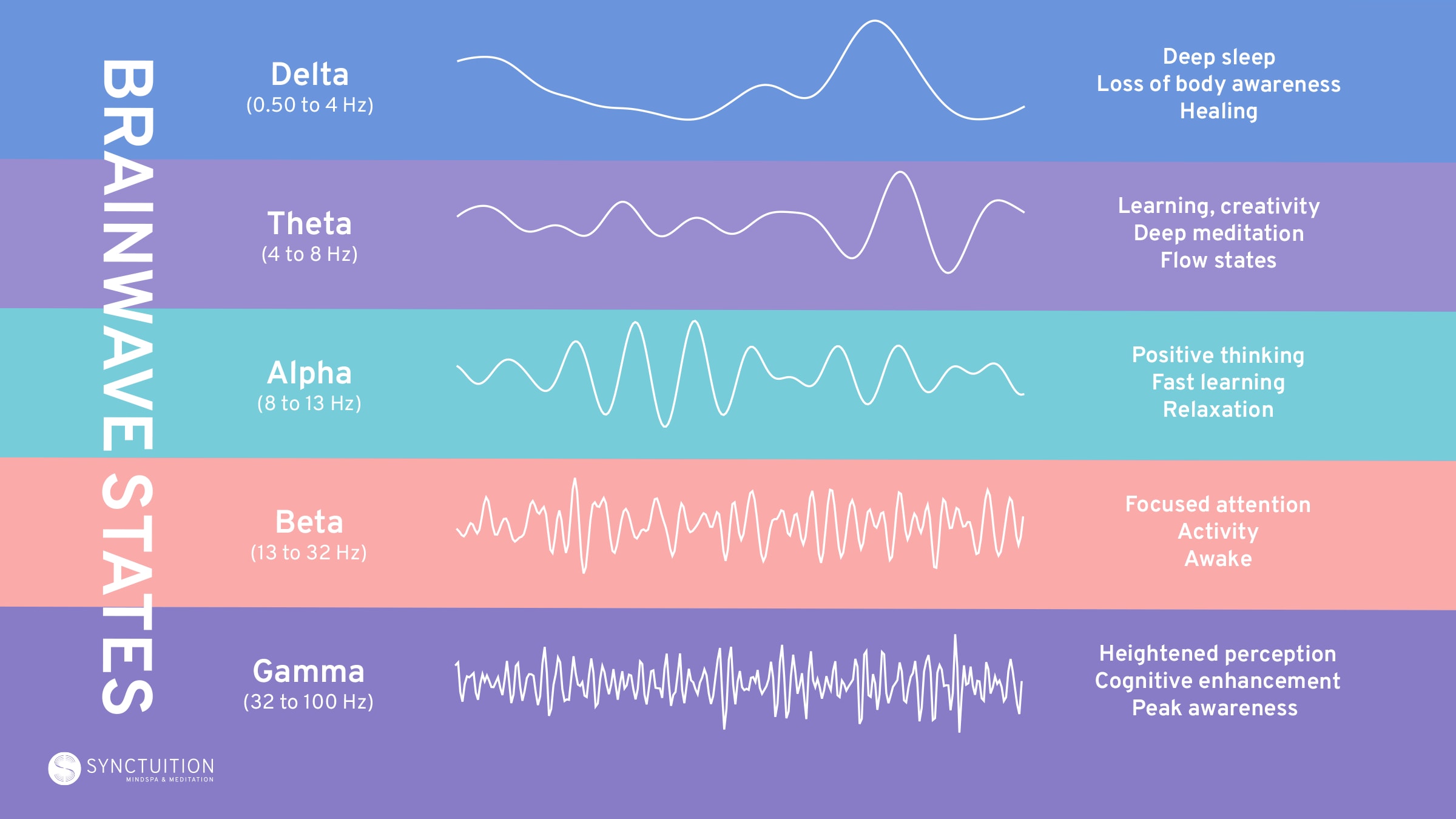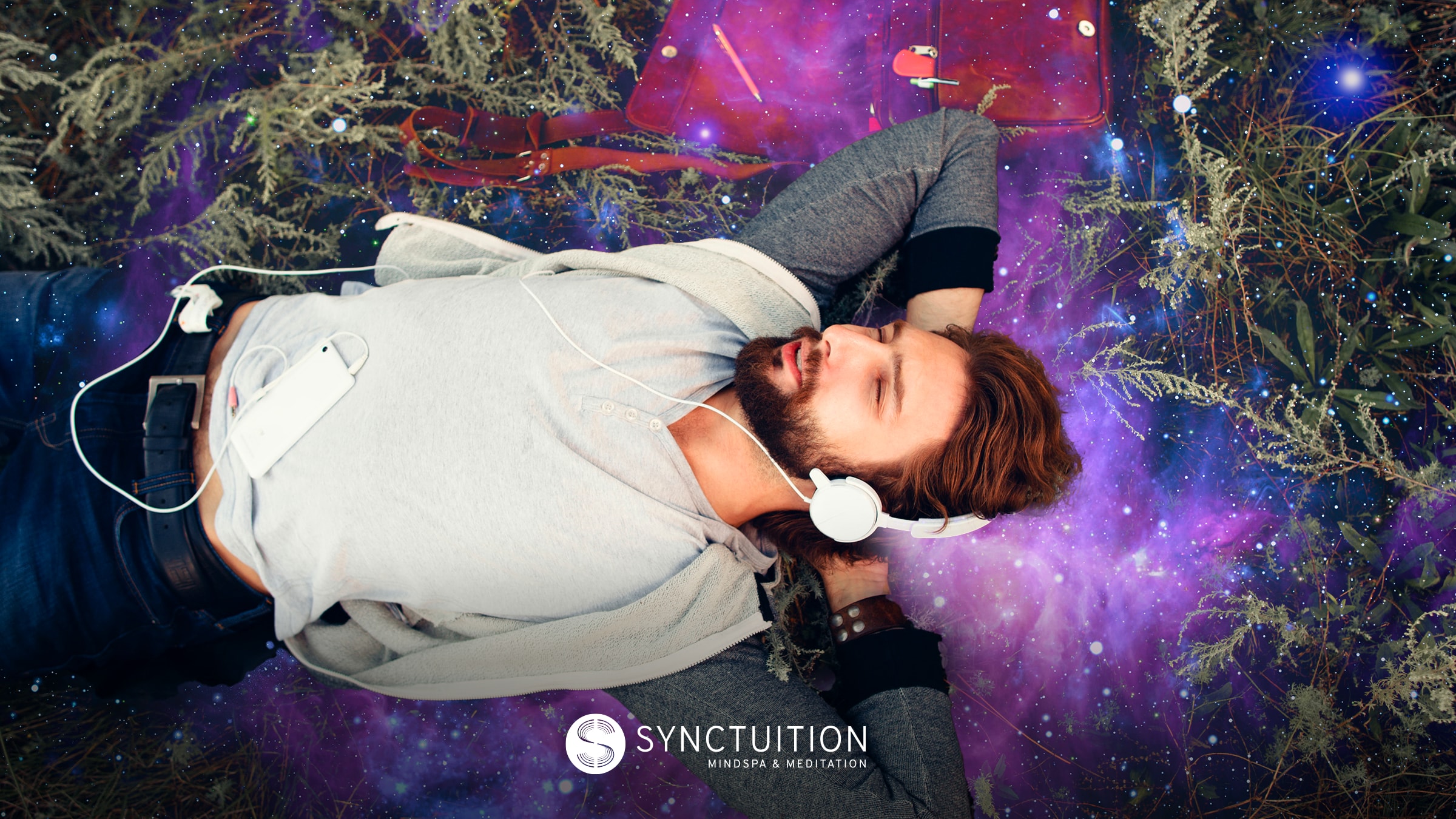If you are familiar with meditation and stress-relief techniques, you might have heard about binaural beats. This is an emerging sound-wave therapy known for inducing the same mental states typical of meditative practices. Binaural beat recordings take advantage of the fact that the right and left ears perceive a slightly different frequency tone. And the brain processes these frequencies as a single one. According to a growing body of research, binaural beats could help us cope with stress and anxiety, and improve our cognitive abilities. But, how is this possible? Here’s everything you need to know about the benefits of binaural beats.
Let’s start with the word itself: binaural. This literally means “having or relating to two ears”. Basically, when you play two tones with a slightly different frequency, they travel separately to the inferior colliculus. This is a part of the brain in charge of collecting audio input. Once there, the tones mix together into a single one, a binaural beat, which is perceived as an entirely new frequency. In this sense, you are hearing something that isn’t actually there. In other words, an auditory illusion.
Binaural beats are nothing new. They were discovered in 1839 by physicist Heinrich Wilhelm Dove. However, they weren’t an immediate hit. Upon their discovery, binaural beats were dismissed as a simple oddity. Somewhere along the way, there was an interest in the potential benefits these mysterious auditory illusions could have for our health.
According to scientific studies, once binaural beats introduce a new frequency, our brain waves tend to sync with it. Brain waves are created by synchronized electrical impulses from hordes of neurons communicating with each other. Brain waves are measured in Hertz, cycles per second. There are 5 brain waves states, which are:
-
Delta (0.50 to 4 Hz)
Loud and slow, delta brain waves are generated during dreamless sleep and relaxation. This state stimulates healing and regeneration. And this is why deep, restorative sleep is such an integral part of the healing process.
-
Theta (4 to 8 Hz)
Theta brain waves are strongly detectable during REM sleep; when we’re dreaming vividly. Research shows a positive relationship with learning, creativity, and intuition. In theta, our senses withdraw from the external world and focus on signals coming from within, which can help us achieve the famous state of “flow”. Theta brain waves are also present during deep.
-
Alpha (8 to 13 Hz)
The first to be discovered, alpha brain waves are faster and more dominant during quietly flowing thoughts. They can also be present in some states of meditation. Overall, alpha brain waves aid relaxation, positive thinking, and fast learning.
-
Beta (13 to 32 Hz)
Beta brain waves dominate our normal state of consciousness. They are present whenever we are attentive, alert, and engaged in decision-making or mental activity.
-
Gamma (32 to 100 Hz)
The fastest of the lot, gamma brain waves promote heightened perception, learning, and problem-solving. Interestingly, gamma brainwaves are stronger and more regular in long-term meditators.

5 Wellness Benefits of Binaural Beats
There’s still a lot to learn about binaural beats. Today, most of the scientific studies of this phenomenon have been small. Yet, the findings suggest that binaural beats have a number of positive benefits involving mood, performance, and even mental health. Here are five benefits of binaural beats backed by scientific research.
1. Deeper meditation
Meditation is to our minds what physical exercise is to our bodies. Meditation trains your mind to become more aware, observant, relaxed, and focused. Those who meditate are able to experience several wellness benefits including calmness, patience, reduced stress, better sleep, and even increased empathy and compassion.
However, meditation doesn’t come easily for everyone. In this face-paced 21st century world, our minds are hyperactive, being constantly bombarded by an overload of negative information. Ultimately, this information overload makes meditation difficult for us. Binaural beats help us achieve the same kind of low brainwave frequency typical of meditative states. Regardless of the kind of meditation you are practicing, binaural beats can help you access a level of heightened awareness faster.
Related: Boost Your Brainwave Activity With Binaural Beats Meditation
2. Improved concentration
If you are looking to tame your monkey brain and increase your concentration for work or school, binaural beats are a good option. Researchers from the Leiden Institute for Brain and Cognition and the University of Greifswald Greifswald investigated whether binaural beats could have an impact on cognitive performance. They discovered that binaural beats in the Gamma brainwave frequency can increase cognitive flexibility, which is a key component in concentration.
3. Stress relief
Stress is part of human nature. However, sometimes we struggle with keeping stress levels at bay. “Just relax,” is the usual, well-meaning advice. Yet, in most cases, this isn’t so simple. As previously mentioned, binaural beats aid meditation, a practice well-known for helping us relax and destress. Now, let’s take a closer look at binaural beats and stress relief.
In one study, researchers had participants exercise for 20 minutes. Then, post-exercise, one group would listen to binaural beats in the theta frequency in a quiet, low-light environment. Meanwhile, the other group listened to placebo tones. Researchers monitored the activity in the parasympathetic (rest and relaxation) and sympathetic (fight-or-flight) nervous systems. The group who listened to binaural beats experienced an increase in parasympathetic activity, reporting higher levels of relaxation.
4. Better Sleep
There’s a big misconception that the brain shuts off as we sleep. This can’t be further from the truth. In fact, the brain is active in similar ways when you are awake. During non-REM sleep, alpha and beta waves (prominent when you are active and alert) are less dominant. Instead, theta waves become more prominent.
A study used binaural beats in the theta frequency (the frequency at which brain activity is entrained during non-REM sleep). In addition, they used ASMR sounds as sensory stimuli to trigger relaxation. Researchers concluded that the combination of the two could induce the brain the signals required for sleep, while also keeping the person in a comfortable, mental state.
Related: Suffering from Insomnia? Relax Your Mind With Binaural Beats

5. Better mood
Our mood mostly depends on external factors. For instance, an argument with your partner leaves you frustrated and sad – in a bad mood. Several studies have sought to regulate mood with binaural beats. In one study, participants listened to binaural beats daily over 60 days at delta frequencies or once for 30 minutes at a theta frequency. They were given a mood states questionnaire containing six subscales: Tension–Anxiety, Depression–Dejection, Fatigue–Inertia, Anger–Hostility, Vigor–Activity, and Confusion–Bewilderment. By the end of the study, participants reported an overall decrease in disturbance, tension, anxiety, confusion, and fatigue. What’s more, there was an increase in self-reported quality of life, demonstrating the positive benefits of binaural beats for wellbeing.
How to Use Binaural Beats
Using binaural beats is very simple. All you need is a good set of headphones and audio containing binaural beat frequencies. Once you have what you need, find a quiet place and sit down in a comfortable position. Listen to the audio for about half an hour every day. This way, you’ll get your brain used to the binaural beat frequencies.
Are Binaural Beats Safe to Use?
After reading about the many benefits of binaural beats, the question is: are they safe to use? The answer is yes. Binaural beats are safe to use for most people. However, it’s important to bear in mind they do not have an effect without headphones. So, when you listen through stereo headphones, you are introducing sound directly to the ears. If you want to preserve your hearing sense, you should listen to moderate volume levels.
If you are a person who suffers from seizures, a heart condition, or uses a pacemaker, it’s recommended to check with a doctor before trying binaural beats. Also, if you are someone who operates heavy machinery, the best thing is to avoid binaural beats while working. This is because the resultant relaxation isn’t compatible with tasks that require your full attention.
Use binaural beats in moderation. 30 minutes or less per day should suffice. If you are experiencing headaches, the best option is to hold back a bit. Overall, you should always consult with a health specialist if you have a pre-existing condition.

The Number 1 Program With Binaural Beats
Each Synctuition journey uses binaural beats in the special Gamma frequency brain. By listening for 25 minutes a day, you will be training your mind to achieve improved focus, deeper meditation, better sleep, and ultimate relaxation. All you need is a good pair of headphones and a smart device! Begin your Synctuition journey today.






